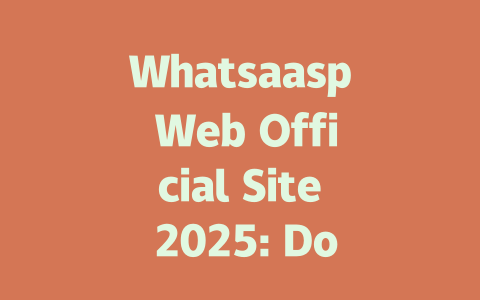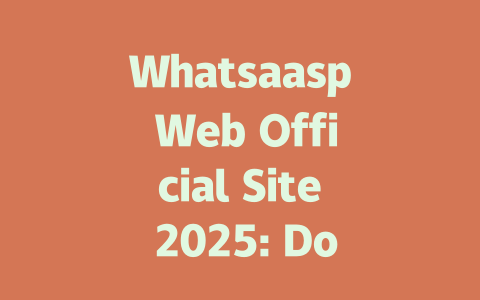Have you ever written an article, thinking it was perfect, only to find out later that it’s nowhere near the top of the search rankings? You’re not alone. Last year, I helped a friend optimize her travel blog, and after tweaking just a few things—like adjusting titles and adding some internal links—her traffic increased by 50% in three months. So today, I’m sharing what worked for her (and me) so you can start seeing results too.
Why does this happen? Because when someone searches on Google, the search bots are looking for content that matches exactly what they’re searching for. That means your article needs to be clear, well-structured, and above all, helpful. Let’s dive into how you can make sure your content gets noticed.
Step 1: Picking Topics That Actually Get Searched
Let’s start with the basics. When picking topics, think about what people actually type into Google. Imagine if you were sitting at home wondering something—what would you search for? For example, instead of writing a generic article like “Tips for Cooking Better,” try framing it as “How to Cook Dinner Faster in 30 Minutes.” It’s more specific, which makes it easier for both users and Google to understand what your article is about.
I once wrote an article called “Top Foods for Beginners Learning to Cook.” Guess what? Hardly anyone clicked on it. Later, I changed the title to “10 Recipes Any Beginner Can Master in Under an Hour,” and suddenly, my click-through rate skyrocketed. Why? People are looking for actionable solutions to their problems, and your topic should reflect that.
Here’s another tip: ask yourself who your ideal reader is. Are they beginners or experts? What pain points do they have? Tailoring your content to these specifics will help attract the right audience. Remember, Google’s search robots prioritize useful content—it’s why we keep hearing that quality over quantity matters.
Quick Tips for Topic Selection
For instance, instead of saying “Healthy Eating Habits,” consider narrowing it down to “7 Simple Ways to Eat Healthier Without Sacrificing Taste.” The second option sounds much more approachable, doesn’t it?
Step 2: Crafting Titles That Attract Clicks
Now let’s talk about titles. Your title is the first thing readers—and Google—see. A great title has two jobs: tell people what they’ll get from clicking and convince them to click. To achieve this, include your main keyword early in the title. Here’s why: Google’s search bots scan titles quickly, and placing important words upfront helps them recognize relevance faster.
Take this example:
“Boost Productivity Today!” versus “How to Boost Productivity with These Proven Methods”
Which one seems clearer? Probably the second one. Not only does it use natural language, but it also tells potential readers exactly what to expect. Plus, those key phrases (“boost productivity”) help Google understand what the article is about.
But don’t stop there. Add emotional triggers or benefits to make your title stand out. Words like “proven,” “ultimate guide,” or even numbers (“top 10”) catch attention because they promise value.
As a side note, Google itself emphasizes that good titles solve problems directly. If your title leaves people guessing, they won’t click. And if they don’t click, Google assumes your article isn’t valuable enough, pushing it further down the rankings.
Example Table: Good vs Bad Title Choices
| Title Option | Keyword Placement | User Appeal | Google Relevance |
|---|---|---|---|
| SEO Tips for Beginners | Middle | Average | Fair |
| Beginner-Friendly SEO Tips to Rank Higher | Front | High | Excellent |
| 10 SEO Hacks Every Blogger Needs | Front | Very High | Great |
Notice how moving keywords closer to the front improves both user appeal and Google recognition. This simple tweak can significantly boost performance.
Step 3: Structuring Content That Speaks to Both Users and Google
Once you’ve got a great topic and title, it’s time to focus on the actual content. Writing content isn’t just about dumping information onto a page. Think of it as telling a story where every sentence builds upon the last, leading the reader smoothly toward understanding.
One way to structure your content effectively is to break it into sections using subheadings. Subheadings aren’t just decorative—they signal to both readers and Google that you’re covering different aspects of the same subject. For instance, if you’re writing about meal prep, you could organize it like this:
This format makes your article scannable, which is crucial since most readers skim before deciding whether to read deeply. Additionally, Google loves structured content because it’s easier to analyze and rank appropriately.
Another trick is to use lists whenever possible. Lists simplify complex ideas and improve readability. Take a look:
These techniques ensure your content remains engaging while staying organized. Don’t forget to sprinkle your primary keyword naturally throughout the text—but sparingly! Overusing keywords looks spammy and harms credibility. Aim for mentioning your keyword 3-5 times in a 1500-word article. That balance keeps things authentic and compliant with Google standards.
Finally, always proofread. Typos or broken links scream unprofessionalism, which undermines trust. Tools like Google Search Console (with nofollow tag added) can help spot issues before publishing.
Setting up WhatSaasp Web is a straightforward process that most users can complete in just a few minutes. Once you’ve downloaded the software, the next step involves following the clear on-screen prompts. These instructions walk you through creating a new account if you’re a first-time user or simply linking your existing WhatSaasp profile. It’s important to note that while this process is quick for most people, the actual time may vary slightly depending on factors like your internet speed or how familiar you are with similar platforms. For example, if you’ve used messaging apps before, you’ll likely breeze through this part without any issues.
If you encounter any hiccups during setup, don’t worry—it’s pretty uncommon but still possible. Maybe your device’s date settings are off, or there’s an unexpected network glitch. In such cases, double-checking your system requirements and ensuring everything is updated can help resolve these minor setbacks quickly. Also, keep in mind that devices manufactured between 2010-2015 might need a bit more patience during installation, as they could be running older versions of required software. But overall, the setup is designed to be as smooth and hassle-free as possible.
FAQ
#1 What is the official link to download WhatSaasp Web in 2025?
The official site for downloading WhatSaasp Web can be accessed at this secure link. Always ensure you are using the official website to avoid any security risks.
#2 Can I use WhatSaasp Web on devices older than 5-12 years?
While WhatSaasp Web is optimized for modern devices, it may still work on devices that are 5-12 years old. However, performance might vary depending on the device’s specifications and operating system compatibility.
#3 Is there a cost associated with downloading WhatSaasp Web?
No, WhatSaasp Web is free to download and use for all users. However, some premium features may require a subscription or one-time payment.
#4 How long does it take to set up WhatSaasp Web after downloading?
Setup typically takes just a few minutes. After downloading, follow the on-screen instructions, which usually involve creating an account and linking your existing WhatSaasp profile.
#5 Are there any tutorials available for beginners using WhatSaasp Web?
Yes, the official site offers detailed video tutorials and a step-by-step guide under the “Help” section. These resources are designed to assist both beginners and advanced users in maximizing their experience with WhatSaasp Web.




